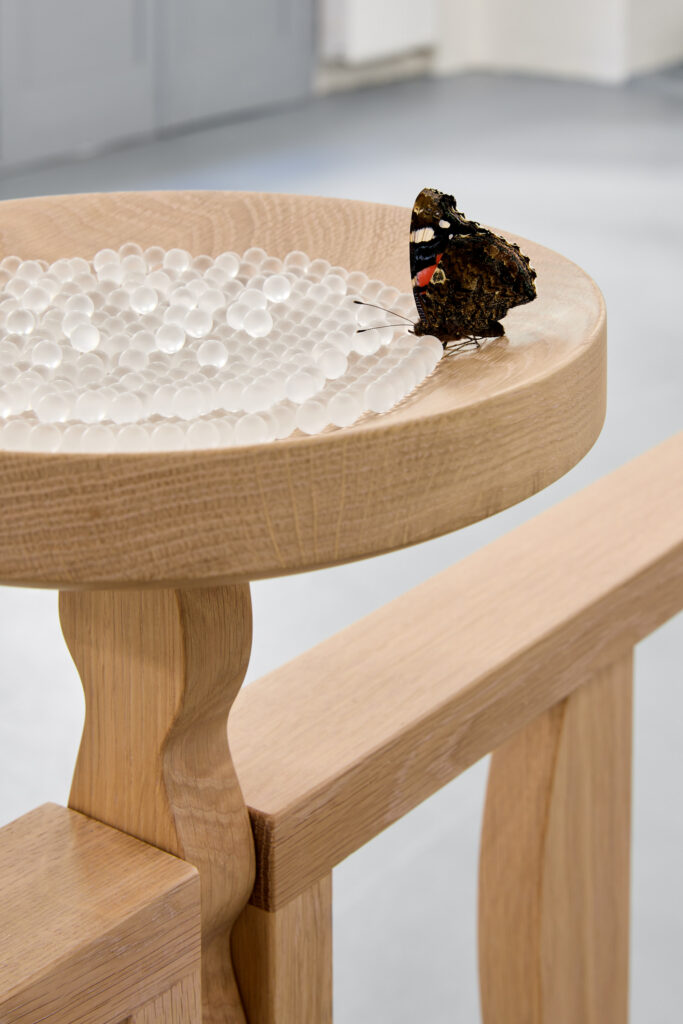Artist: Eliška Konečná
Venue: Polansky Gallery, Prague
Title: Thirst
Curator: Caroline Krzyszton
What is fascinating about Eliška Konečná’s work is that it detaches itself from any chronological linearity to gradually approach a certain timelessness, a form of universalism mirroring the history of art.
This interpretation finds its roots in Eliška Konečná’s relation to symbolism and the almost classical construction of her narration around allegorical figures. The artist seems to slowly develop her personal mythology filled with characters depicted for their individual qualities, struggling with morality issues, while she uses a very intuitive language, leaving a great place for pure aesthetic considerations. In this sense Eliška Konečná’s practice definitely illustrates a certain return to sensuality.















This project is the continuation of the artist’s previous exhibition at eastcontemporary gallery in Milan titled A Dry Place to Fall, where one could already view The Great Sleep (Velký Spánek), the first of three large textile bas-reliefs constituting the triptych of Thirst.
At Polansky were added The Great Feast (Velká Hostina) and The Great Bath (Velká Koupel) as the two missing scenes from the final artwork.
If Eliška Konečná has been using this media for several years now, this body of work is definitely the one where she has used the most figurative drawing and most abundant use of color, as if the overlapping painting coexisted alongside the sewn drawing as its own independent narrative, its abstract counterpart, or its palimpsest.
The two artworks constituting the side panels of the triptych, The Great Sleep and The Great Bath both find the figure of a breastfeeding woman as their main character: a tormented mother offers her milk to an abandoned baby bird. This useless attempt to save a life is performed in front of an audience of secondary characters that either sleep (The Great Sleep) or stare at her (The Great Bath). We, as the gallery audience, notice both the woman’s great despair and the lack of care or the schadenfreude of the other characters, as the scene’s third perception angle.
At the center, in The Great Feast, all characters are placed in a circle composition within which lines make uncertain whether they feed each other or if they prevent other ones to have access to food, whether they are offering or taking. On the foreground, one of them suffocates himself. But we stand in front of him without empathy.
Indeed, Eliška Konečná’s scenes are not joyful nor sad, we observe her characters at a distance, as we would stay behind a fence, helpless but curious, how the story unfolds.
Her characters, as antique gods, make unavoidable human mistakes, they give in to temptation, they let primary needs hinder their judgment. Their bodies exist both as the manifestation of their desire and the vessel of their punishment.
In Eliška Konečná’s artworks, emotion is treated as a background of sensuality, or as its direct consequence. If her subjects often illustrate a notion of impossibility, their pain and guilt is opposed with resignation and acceptance, as eventually the bodies, limited by their own humanity, are transcended by their ability of neutrality.
Life and death here are described contextually, in situations where water flows, or where it is missing. Such as The Fountain suggests, water may be shortly contained but it is never imprisoned, it wipes away as much as it draws shapes. Water also never disappears, it escapes and transforms. It can forget.
And as the bodies wash themselves in The Great Bath in a possible attempt for forgiveness, the artist lets us glimpse at eternity in a drop of water.
